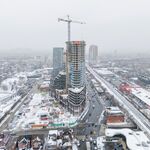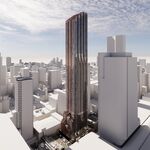King of Kensington
Senior Member
The area is quite mixed-income, though definitely skews toward the lower end. However most of the gentrified Victorian houses have white folks living in them.
The area is quite mixed-income, though definitely skews toward the lower end. However most of the gentrified Victorian houses have white folks living in them.
Having white folks doesn't mean it is mixed income. White folks can be poor. Most of the street beggars near Dundas Square and drug addicts near Moss Park I have seen in Toronto are white.
Judging by the condition of houses in Chinatown including the side streets, I doubt it is that mix-income. Those properties owners seem not to care about their properties at all.
Average income by census tract as a percentage of Toronto CMA:
Tract 36:
1970 65%
1990 84%
2012 92%
Tract 37:
1970 62%
1990 74%
2012 70%
Tract 38:
1970 62%
1990 57%
2012 66%
Tract 39:
1970 56%
1990 55%
2012 53%
Only in Tract 36 can it be said that significant gentrification has occurred. That tract includes the Grange. A bit of gentrification in Kensington (tract 38), but nothing dramatic. Tract 39 includes the Alexandra Park housing project and remained very low income through this period.
The Wikipedia article on Chinatown has been recently edited and now distinguishes between "first Chinatown" (near City Hall) and "old Chinatown" (Dundas and Spadina). I get the need to distinguish it from the east end Chinatown, Agincourt etc. but I don't hear Dundas-Spadina referred to as "old Chinatown" very often. It's usually just called Chinatown.
the one at Gerrard and Broadview is hardly a "Chinatown", more Vietnamese than Chinese.
Agincourt is a suburban community with a lot of Chinese. Hardly the kind of walkable and vibrant Chinatowns people usually associate with.
You do need a little more data to reliably make that conclusion. If the standard deviation of income rose significantly, land value reconciliation could have occurred in Tract 39 with many higher income residents arriving, and those with middle incomes leaving, replaced by low income households.
Another issue is if this data is based on "average income" or "average household income", and if the average household size has changed. Is it an issue of a family of four making 53% of "average income" vs. a single person making 53% of "average household income"?
Indeed. I don't know where the "Chinatown is mostly Vietnamese" myth (I've heard it for both Chinatown proper and East Chinatown incidentally) came from.
Well East Chinatown sounds better than "little Chinatown."
But to return to my point: I very rarely hear Chinatown referred to as "old Chinatown" and I'm curious if others hear this term regularly used for this area. When someone says "let's meet in Chinatown," do people reply "which one?" Not in my experience.
If you said Old Chinatown to me, I'd wonder if you were referring to Elizabeth Street and environs.




